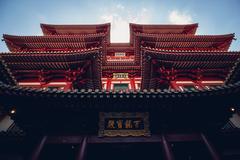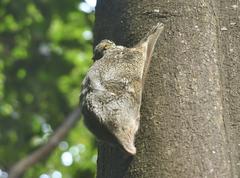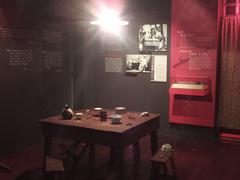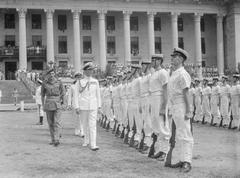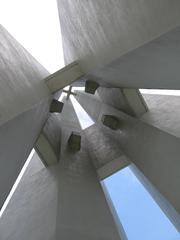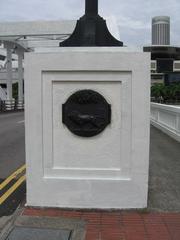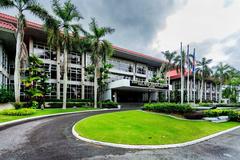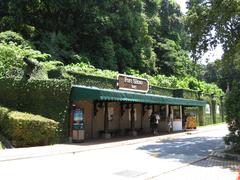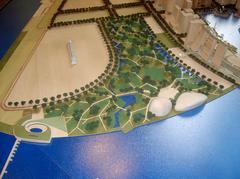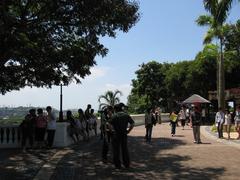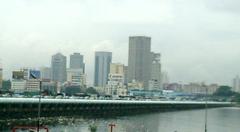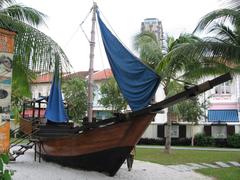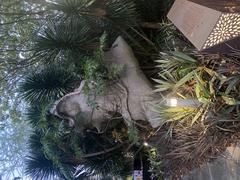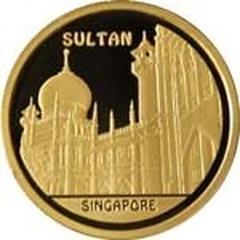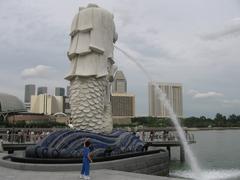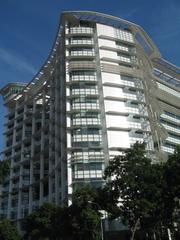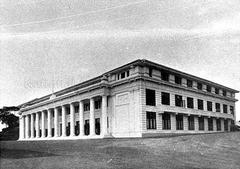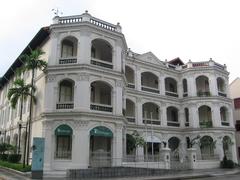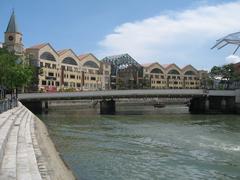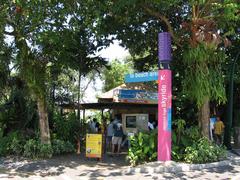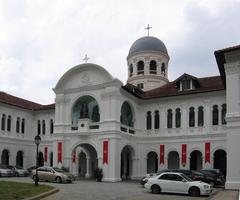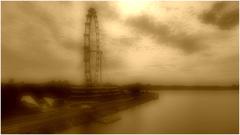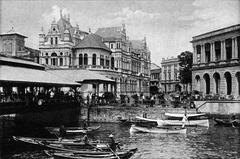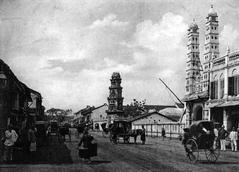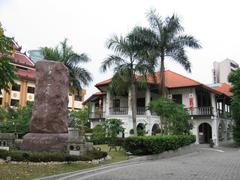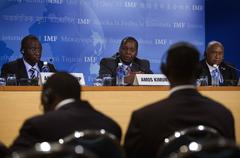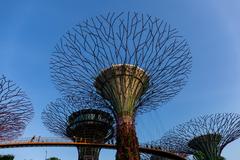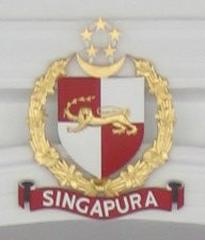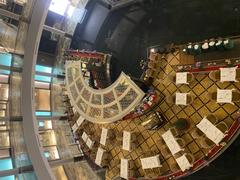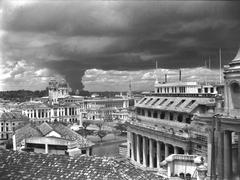Hotel New World Disaster Singapore: Visiting Hours, Tickets, and Historical Site Guide
Date: 04/07/2025
Introduction
The collapse of Hotel New World on 15 March 1986 stands as a watershed moment in Singapore’s modern history, profoundly shaping the nation’s approach to building safety, engineering standards, and emergency response. Located at the busy junction of Serangoon Road and Owen Road, the six-story Lian Yak Building’s sudden collapse claimed 33 lives and left 17 survivors, exposing critical failures in structural engineering and regulatory oversight (National Library Board; Wikipedia).
Today, the site—now occupied by the Fortuna Hotel—serves as a poignant reminder of the disaster, and offers visitors a unique opportunity to reflect on Singapore’s journey from tragedy to resilience. This guide provides a comprehensive overview: from the historical background and rescue operations to practical visitor information, accessibility, and nearby attractions. Whether you are a history enthusiast, a student, or a traveler keen to explore Singapore’s urban heritage, this article will help you make the most of your visit.
Table of Contents
- History and Background of the Disaster
- Timeline of Key Events
- Rescue Operations and Emergency Response
- Investigations, Findings, and Reforms
- Visiting the Hotel New World Site
- Nearby Attractions and Heritage Trails
- Travel Tips and Accessibility
- Frequently Asked Questions (FAQ)
- Visual Gallery
- Conclusion and Call to Action
- References
History and Background of the Disaster
Origins and Construction
The Lian Yak Building, completed in 1971, was designed as a mixed-use structure with a basement garage, ground-floor bank, and upper hotel floors. It housed the Hotel New World—formerly the New Serangoon Hotel—along with commercial tenants and a nightclub (Wikipedia; National Library Board).
Early Warning Signs
Troubles surfaced as early as 1975 when a carbon monoxide leak hospitalised 35 guests, raising concerns about the building’s safety. Over the years, modifications, including the installation of a heavy rooftop water tank and air-conditioning units, further strained the already vulnerable structure (National Library Board).
Structural Deficiencies
A government inquiry found that the original engineer had failed to account for the building’s dead load, resulting in dangerously under-designed columns and beams. Substandard materials and a lack of proper oversight further contributed to the disaster (Wikipedia).
The Collapse: 15 March 1986
On the morning of 15 March 1986, creaking and cracking noises signaled imminent structural failure. At 11:25 am, the entire building collapsed within seconds, trapping 50 people beneath tons of debris. Emergency services responded swiftly, launching Singapore’s largest peacetime rescue operation (Channel NewsAsia; Remember Singapore).
Timeline of Key Events
- 1971: Completion of Lian Yak Building.
- 19 August 1975: Carbon monoxide leak incident.
- 15 March 1986, 10:45–11:10 am: Creaking noises reported.
- 11:25 am: Sudden collapse.
- 11:26 am: Police and fire services alerted.
- 12:00–1:00 pm: Arrival of rescue teams; site cordoned off.
- 21 March 1986: Final bodies recovered; rescue operation concludes.
- 26 April 1986: National awards presented to rescuers.
- May 1986–February 1987: Commission of Inquiry conducts investigation and releases findings (National Library Board).
Rescue Operations and Emergency Response
Mobilization and Strategy
The rescue operation involved over 500 personnel from multiple agencies, including the SCDF, Singapore Fire Service, Police, Armed Forces, and volunteer medical teams. Bystanders initially attempted to dig survivors out, but professional teams quickly took over, utilizing a combination of manual search, heavy machinery, listening devices, and sniffer dogs (Straits Times).
Key Challenges
- Structural Instability: Risk of further collapse complicated rescue efforts.
- Limited Access: Pancaked floors and narrow gaps obstructed rescue paths.
- Time Pressure: Survival rates decline sharply after the first 24 hours.
Notable Rescues
The most dramatic moment came nearly 60 hours after the disaster, when a survivor was pulled from the rubble live on television, inspiring the nation (Remember Singapore). In total, 17 people were rescued alive, and 33 lost their lives.
Community Response
Citizens and volunteers provided food, medical supplies, and emotional support. The disaster fostered a spirit of solidarity and resilience among Singaporeans (NHB eBook).
Investigations, Findings, and Reforms
Commission of Inquiry
A government-appointed Commission of Inquiry determined that the collapse was caused by critical design errors and a lack of regulatory oversight (National Library Board).
Key Findings
- Absence of dead load calculations in structural design.
- Use of undersized columns and beams.
- Poor construction practices and inadequate maintenance.
- Ignored warning signs, such as cracks and prior incidents (Goody Feed; SG101).
Reforms and Legacy
- Building Codes: Introduction of stringent structural safety standards, mandatory periodic inspections, and independent checks for all new buildings (Building and Construction Authority).
- Emergency Services: Merger of the Singapore Fire Service and Civil Defence Force in 1989 to form the SCDF, enhancing disaster preparedness (SCDF Official History).
- Urban Search and Rescue: Establishment of USAR teams with advanced training and equipment.
Visiting the Hotel New World Site
Location and Accessibility
- Address: Fortuna Hotel, 383 Serangoon Road, Singapore (junction of Owen Road and Serangoon Road).
- Nearest MRT Stations: Farrer Park and Little India, both wheelchair-accessible.
- Access: The site is an open, public space without restricted hours or entrance fees.
Memorials and Plaques
A commemorative plaque near the former hotel footprint honors the victims and rescuers. While modest, it stands as a focal point for reflection and remembrance (Singapore Atrium Sale).
Visiting Hours and Admission
- Open Access: The site can be visited at any time, though daylight hours (9:00 am–6:00 pm) are recommended for safety and comfort.
- Admission: Free; no ticket required.
Guided Tours and Educational Programs
Several heritage tours, including those covering Singapore’s disaster history and Little India, feature the Hotel New World site. For educational programs and occasional exhibitions, check offerings by the National Heritage Board and National Library Board (NHB eBook).
Accessibility
- Wheelchair Access: Smooth, wide pavements.
- Facilities: Nearby cafes, restrooms, and seating areas.
- Travel tip: Visit during less crowded periods for a more contemplative experience.
Nearby Attractions and Heritage Trails
- Little India: Explore vibrant markets, the Sri Veeramakaliamman Temple, and cultural landmarks.
- Tekka Centre: Experience local cuisine and fresh produce.
- Jalan Besar Heritage Trail: Discover historic architecture and multicultural stories.
- National Museum of Singapore: Learn about other defining moments in Singapore’s history.
Travel Tips and Accessibility
- Getting There: MRT (Farrer Park or Little India) and numerous bus routes.
- Best Time to Visit: Year-round, preferably on weekdays to avoid crowds.
- Respect for Site: Maintain a respectful demeanor; photography is allowed but should be discreet.
Frequently Asked Questions (FAQ)
Q: Can I visit the original Hotel New World building?
A: No, the original building collapsed in 1986. The site is now occupied by the Fortuna Hotel.
Q: Is there a memorial or museum at the site?
A: There is a commemorative plaque, but no dedicated museum. Occasional exhibitions are organized by heritage institutions.
Q: Are guided tours available?
A: Yes, some heritage tours include the site. Check with local operators or the Singapore Tourism Board.
Q: Is the site accessible for disabled visitors?
A: Yes, the pavements are wheelchair-friendly and the area is easily navigable.
Q: Are there any entrance fees?
A: No, the site is open to the public free of charge.
Visual Gallery
- Commemorative plaque at the Hotel New World collapse site (alt: “Hotel New World Memorial Plaque in Little India, Singapore”)
- Archival photo of rescue teams operating during the 1986 collapse (alt: “Rescue operation at Hotel New World collapse, 1986”)
- Map of Little India highlighting the Hotel New World location (alt: “Map showing Hotel New World site in Little India, Singapore”)
Conclusion and Call to Action
The Hotel New World disaster is a stark reminder of the importance of engineering integrity, regulatory vigilance, and community resilience. The reforms that followed the tragedy have made Singapore a global model for safety and disaster preparedness. Visiting the former site, exploring nearby heritage districts, and engaging with archival resources offer opportunities to reflect on Singapore’s journey from loss to renewal.
For more history and travel content on Singapore’s historical sites, download the Audiala app, explore related articles on Singapore heritage tours, and follow us on social media for the latest updates and guided tour opportunities.
References
- This guide draws on official and archival sources for accuracy and depth. For further reading, visit:



